
Compare home insurance deals
Check Which? insurance ratings and compare deals using the service provided by Confused.com
Get a quoteBy clicking a retailer link you consent to third-party cookies that track your onward journey. If you make a purchase, Which? will receive an affiliate commission, which supports our mission to be the UK's consumer champion.
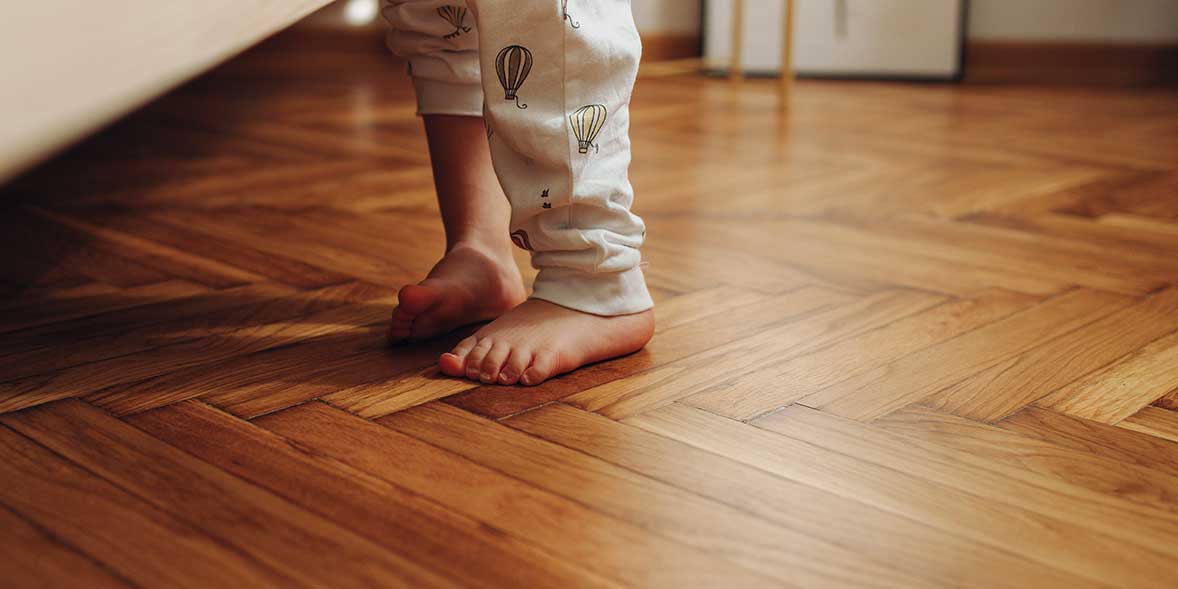
From modern laminate to reclaimed hardwood, the warmth and texture of wooden floors – whether faux or the real deal – is a popular choice for homeowners. Before you make your choice, familiarise yourself with the various types of wood flooring.
In our exeprt guide, we reveal how much you should expect to pay and which rooms it's suited to. We've also explained the difference between tongue-and-groove flooring and click-lock flooring, plus how much you should expect to spend for these types.
Keep scrolling to explore the pros and cons of flooring types including laminate, reclaimed wood, parquet and bamboo.
Avoid common errors when hiring a professional or laying a wood floor yourself – read our guide on how to fit and care for your wood flooring
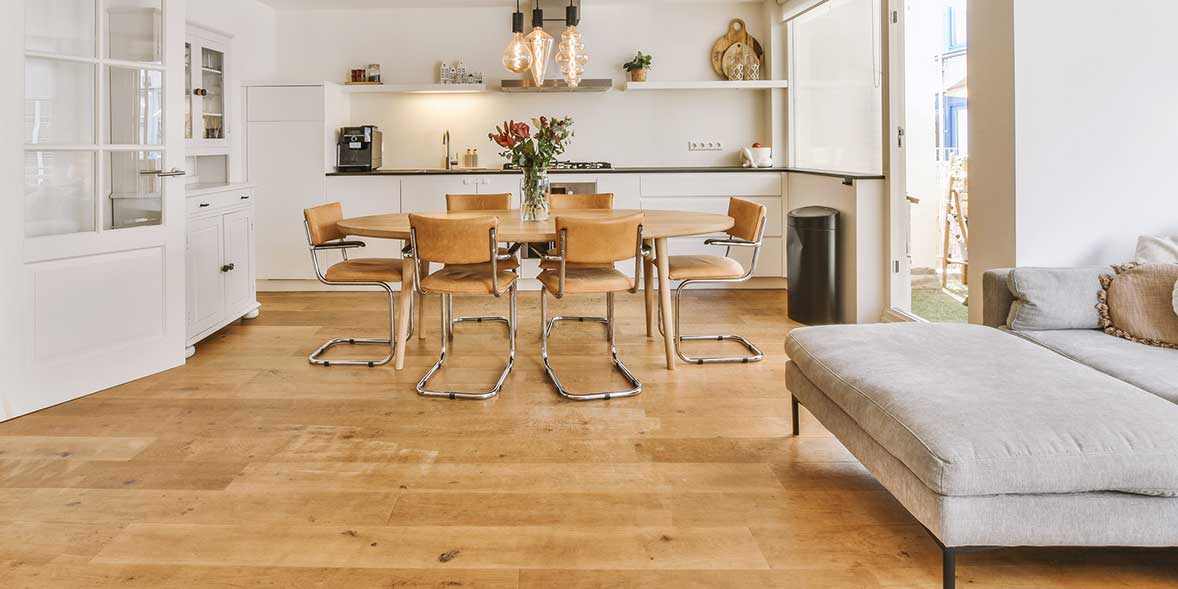
This is a compressed fibreboard plank, covered with a photographic image of wood with a protective overlay. Quality can vary considerably, so it pays to buy the best quality you can afford.
The edges of some laminate flooring boards have a slight bevel to create a more realistic appearance. It also helps to avoid damage caused by moisture-induced swelling at the edges of laminate boards.
We suggest you avoid laminate flooring with a chipboard core, because it expands and contracts a lot. Don’t buy damaged packages where water vapour might have swollen the boards, either. Look for a fibreboard base with a plain-coloured underside (usually green or brown), which gives added protection against moisture.
You can find some options for as little as £8 per square metre, but be aware that the cheapest types have too smooth a finish to look particularly realistic.
Laminate is suited to high-traffic areas that need frequent cleaning, such as living rooms, studies and playrooms. Check the guarantee carefully before buying to ensure that you won’t invalidate it.
Some include a waterproof core, which manufacturers claim makes them suitable for bathrooms and kitchens.
If you're upgrading your home, see our expert advice on planning a kitchen and planning a bathroom
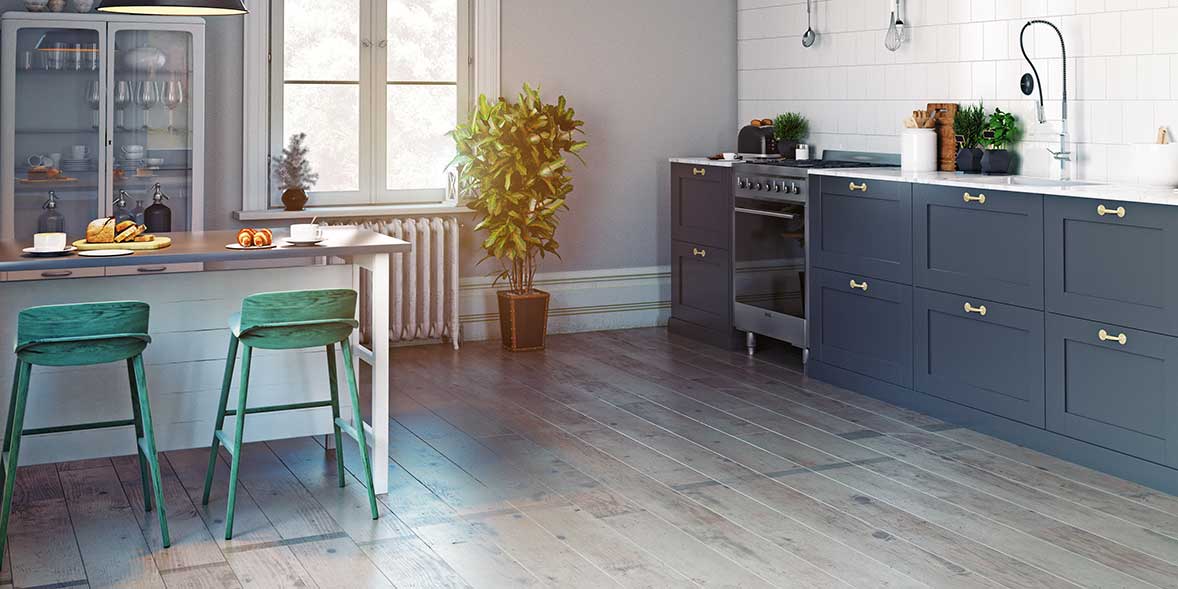
Each engineered wood floorboard consists of three or four layers of wood, glued together to create a plank around 14mm thick. It has a real-wood veneer of around 4mm thick on top, which means it can be sanded back and treated to restore the original finish if it becomes scuffed, worn or damaged.
Engineered wood flooring is sometimes available with click-lock installation, which doesn't require any adhesive. Tongue-and-groove versions will need to be glued into place.
Prices range from about £19 per square metre, to more than £160 for expensive woods.
Living rooms, dining rooms, bedrooms and kitchens. While it's more resistant to warping than solid wood, it's still best avoided in places where it will be exposed to a lot of humidity, such as a bathroom. It's also best avoided on stairs, where it's time-consuming and fiddly to lay.
It can be tricky to achieve a good finish around corners, too, such as around sink pedestals.

Click-lock flooring has edges that are machined to form an interlocking joint, so that you have to click them together with a particular action. Once they're in place, they can’t dislodge and move apart.
It’s generally considerably easier and quicker to fit a click-lock floor, as they don't need to be fastened with an adhesive. What’s more, the interlocking mechanism creates very tight-fitting joints, reducing the chances of gaps forming after it has been fitted.
Opting for click-lock flooring means the planks can be unfastened and lifted out if you need to get access under the floor, which you can’t do with tongue-and-groove flooring.
If you need the help of a professional, use Which? Trusted Traders to find someone locally:
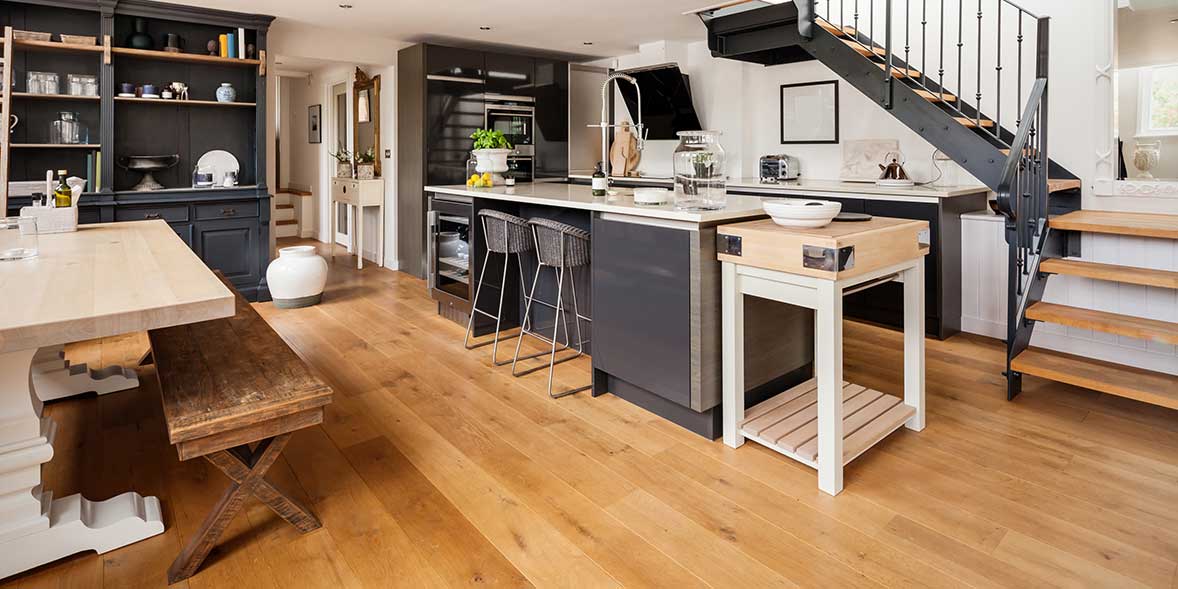
Each board is made from a single piece of wood, which is typically 18-20mm thick. It's usually fitted using a tongue-and-groove system.
Solid wood flooring can be sanded back to restore the finish – the number of times you can do this is determined by how deep the tongue is set from the top of the board. It’s also worth seeing how well the planks fit together on in-store display panels, so look at the quality of the finish and the size of any gaps between the planks.
Wood is a natural material and the planks will vary a little in colour, but some more than others, so think about whether you want a uniform look or a set of planks with a range of light and heavy grains.
Note that solid wood floorboards can amplify sound, so rugs are a good option if you have boards upstairs.
Prices vary depending on the cost of raw wood, from £15 per square metre for the cheapest options to £82 per square metre for some tropical hardwoods.
Anywhere with relatively consistent humidity, particularly in hallways and living areas where you can show it off.

Although tongue-and-groove might sound like jargon, its actually a straightforward description of the way that individual planks fit together. Each plank has a protruding 'tongue' along its length that fits into a 'groove' on the adjacent plank.
Fixing tongue-and-groove together can be quite complicated. Once the tongue is in the groove, you have to knock it firmly into place. If you get the angle wrong, you could dislodge planks that you’ve already joined.
They also need to be glued into position and wedged or strapped together until the glue is set. Using insufficient glue or failing to hold it tightly together before it sets can lead to gaps between planks.

Reclaimed wood flooring is timber that has been used in another, older property that has been salvaged to be reused. Generally, it's very durable.
If you live in an older property, you might be lucky and discover perfectly preserved original floorboards under decades-old carpet. If not, you can source your own vintage planks.
Prices vary depending on where you buy. You might find someone giving floorboards away free or cheaply on marketplace sites such as eBay and Gumtree. At salvage yards, boards tend to start from about £25 per square metre. This can rise to well over £100 per square metre depending on the condition, age, wood and width of boards.
Reclaimed timber flooring can be installed anywhere, but it's best avoided in bathrooms where moisture may cause the timber to swell and crack. If you do lay reclaimed wood in bathrooms, wipe up spills quickly and keep the room well ventilated.

Check Which? insurance ratings and compare deals using the service provided by Confused.com
Get a quote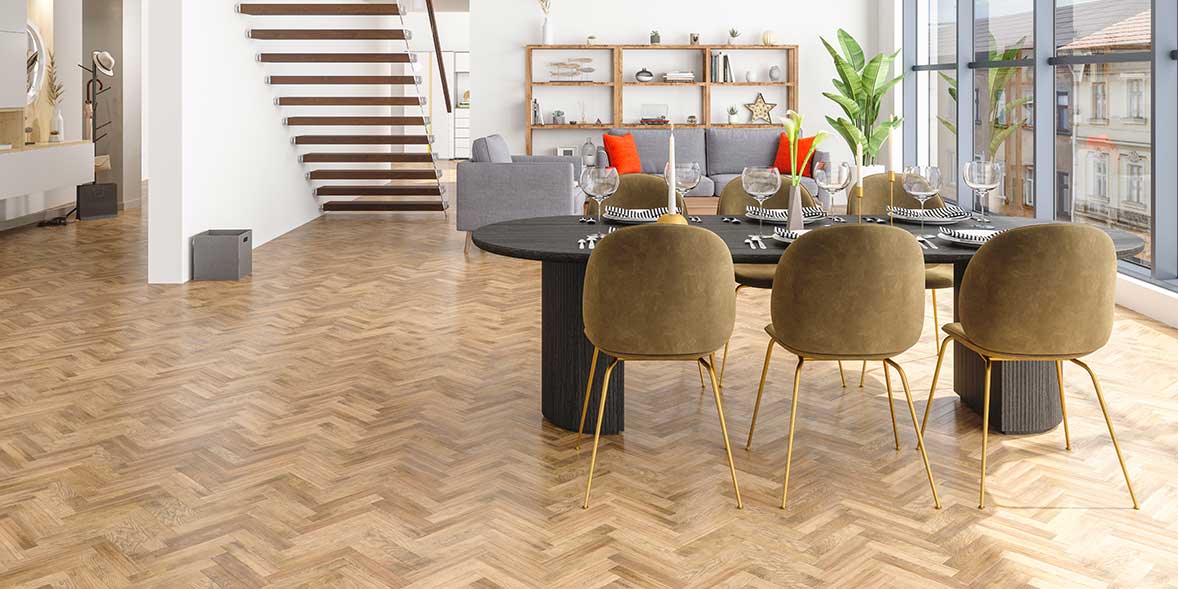
Parquet flooring is easily recognisable and formed of short, wooden blocks or strips arranged in a geometric pattern – usually herringbone or basket weave.
Visually, you might find this wood flooring type more interesting than others.
Parquet prices start from £25 per square metre and go well into the hundreds.
Parquet flooring is suitable throughout a property, but best avoided in humid areas such as bathrooms.
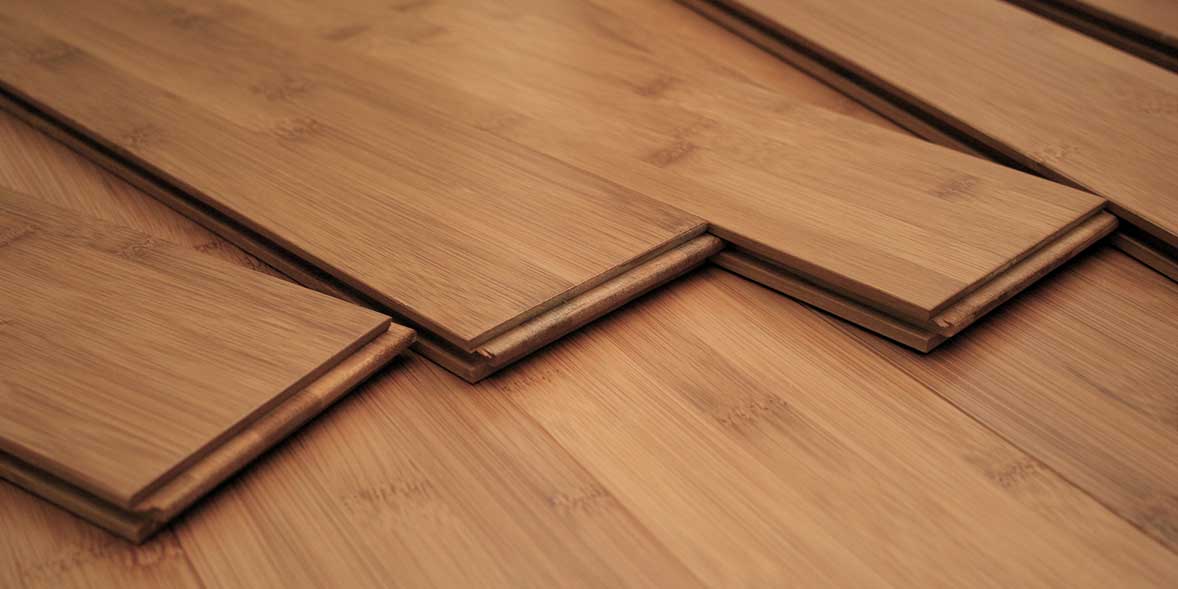
Technically a grass rather than a wood, bamboo forms its own unique grain pattern and can be worked into extremely hard-wearing floorboards that look and feel very similar to natural hardwood. It's also easy to clean.
Bamboo reaches maturity in a quarter of the time of hardwood trees, which means it's more sustainable to harvest.
The material is water resistant (so less likely to develop mould and mildew), but not waterproof – too much water can leave unsightly spots and cause the flooring to warp. Darker bamboo has been through a carbonisation process, which weakens the material and makes it softer and more prone to scratching.
Prices vary, but start from about £20 per square metre.
Bamboo works well in most rooms. Although it's more water resistant than hardwood, it's not waterproof, so it's best avoided in bathrooms.
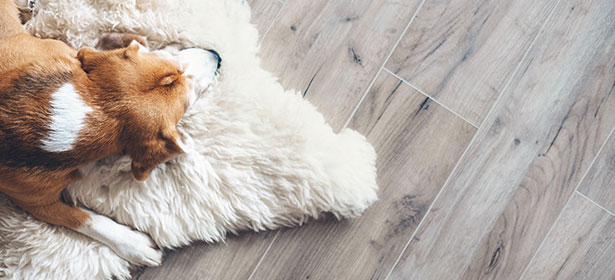
Combining the beauty of natural wood with the durability of ceramic tiles, wood-effect tiles are affordable and practical. You'll have a wide range of colours and styles to choose from.
Prices vary from around £12 per square metre to more than £150 per square metre.
Wood-effect tiles are waterproof and much more resistant to wear and tear than hardwood and laminate floors, so they're ideal in bathrooms, kitchens and high-traffic areas such as hallways.
Some brands make matching indoor and outdoor tiles, so that you can continue your flooring out on to patios and porches.
Remember that tiles require grout, which can be a trap for dirt and debris, but the best vacuum cleaners can lend a helping hand
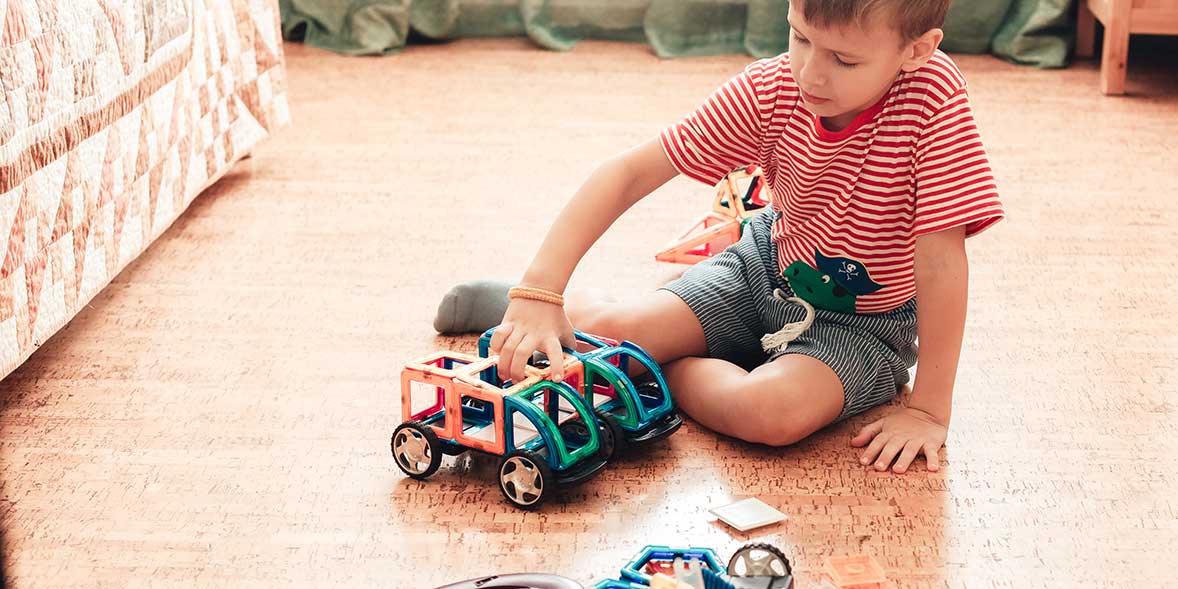
Eco-friendly and sustainable, cork is actually the bark of the cork oak tree. Bark naturally splits periodically – around every nine to 15 years – and can be safely harvested without harming the trees. The bark regrows and the cycle continues.
For flooring, cork is ground up, compressed and formed into sheets bonded with resins. Natural, quickly renewable cork is biodegradable at the end of its life cycle, so it's an eco-friendly option.
Prices start from about £20 per square metre for cork tiles.
Cork has a soft surface that can have a slight cushioning effect, so it can be a great choice for children's bedrooms or playrooms. Don't be afraid to use it in the bedroom, either, as cork retains warmth so feels cosy underfoot. It's also a good choice for those with allergies, as it doesn't absorb dust or mites.
Cork floor tiles are finished with a clear varnish that gives protection against water stains and damage. However, if the seal isn't perfect and the room floods, the cork will probably warp and discolour. High humidity can also cause cork to curl, so it's best to avoid it in bathrooms.
If you're aiming to keep costs low as you upgrade your home, laminate flooring is worth a closer look – you can expect to spend around £20 to £25 per square metre. As a bonus, you shouldn't have trouble finding a shade that suits your unique style.
Bevelled edges, a more varied set of wood-effect patterns and embossed features, such as knots, will give a more natural look and texture, but they cost more. Brands such as QuickStep (about £18 to £44 per square metre) and Pergo (about £18 to £49 per square metre) offer more premium options.
Whether you're shopping online or in store, make sure you pay attention to the shop's returns policy.
Popular online retailers that stock wood flooring include:
Find out which retailers are rated highly by Which? members with our expert guide to the best home and DIY shops
Be inspired to make home improvements. Sign up for our free monthly Home newsletter